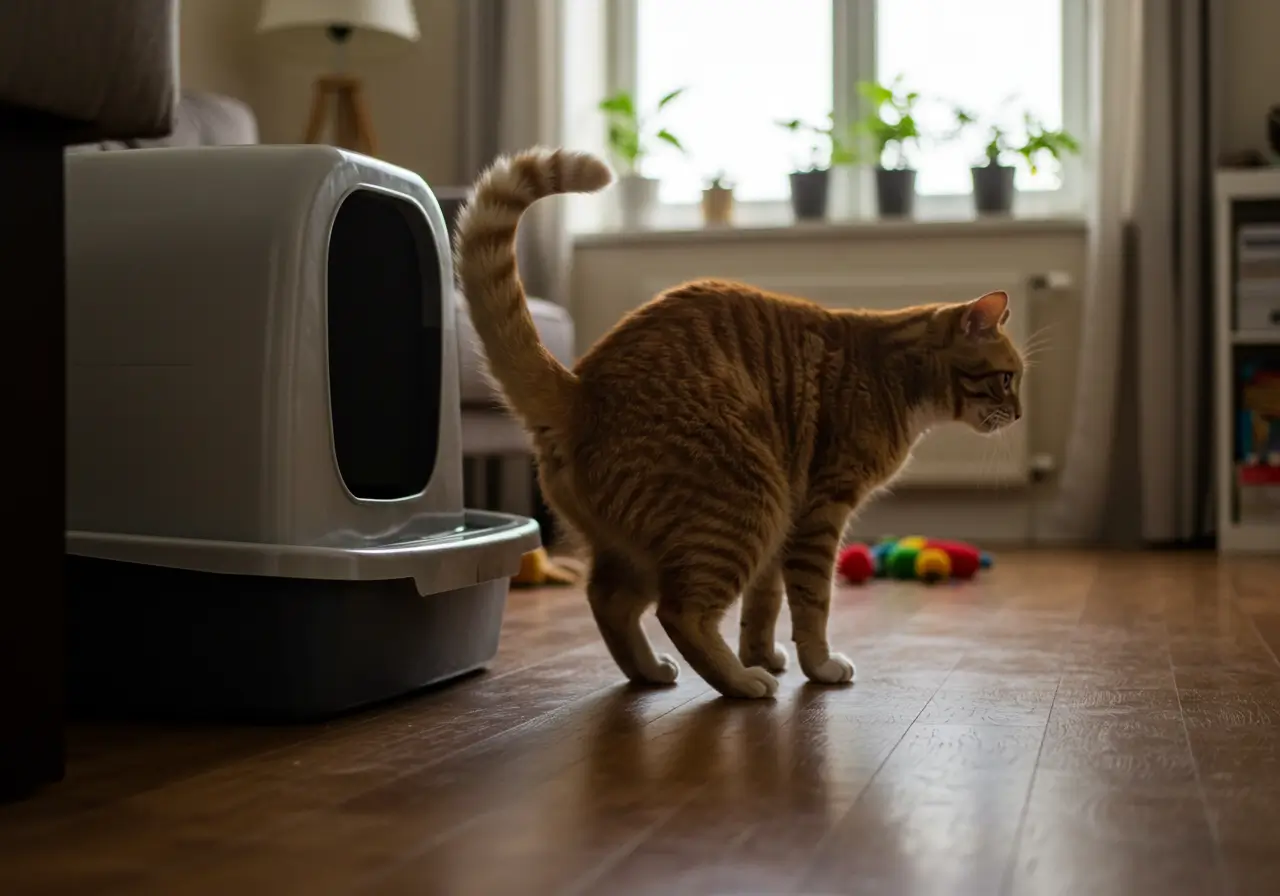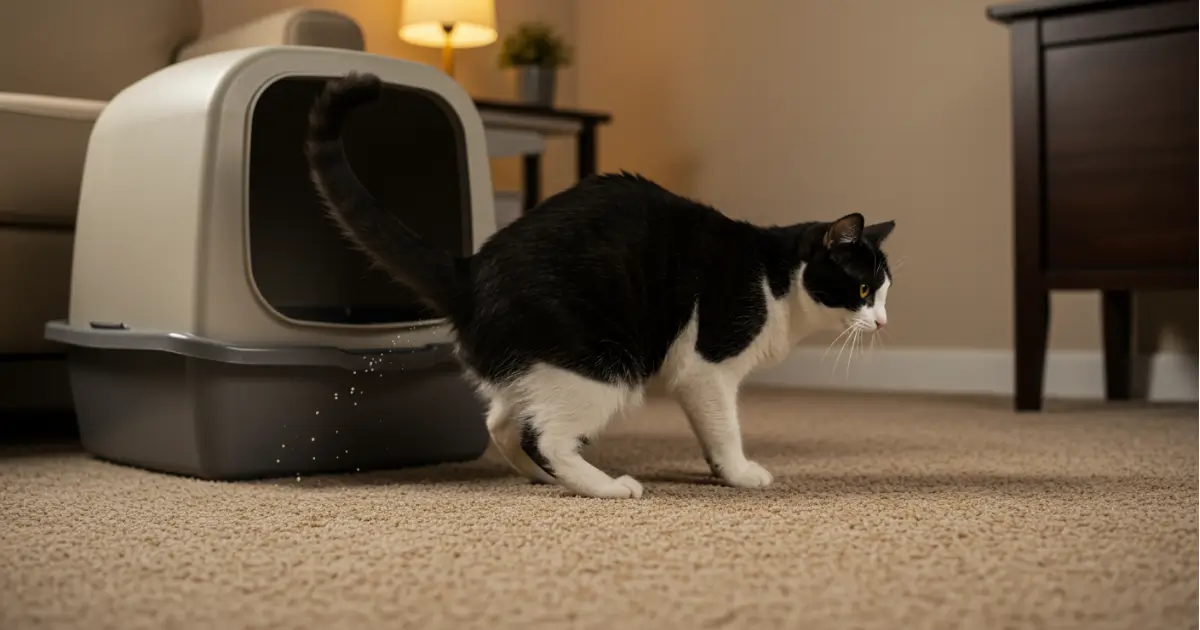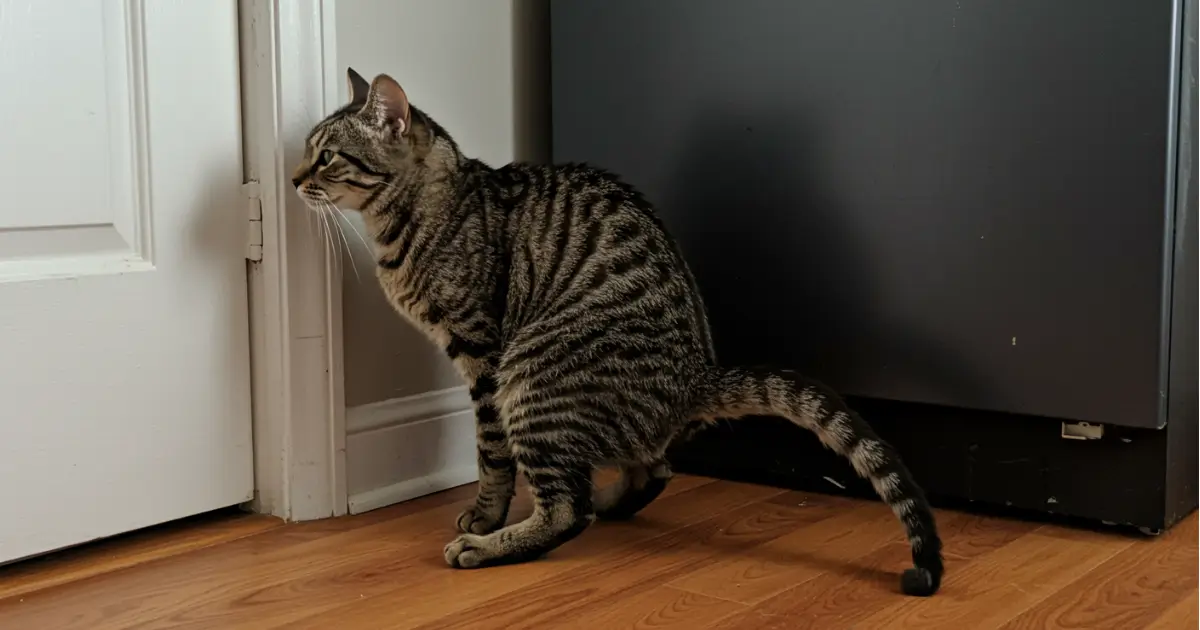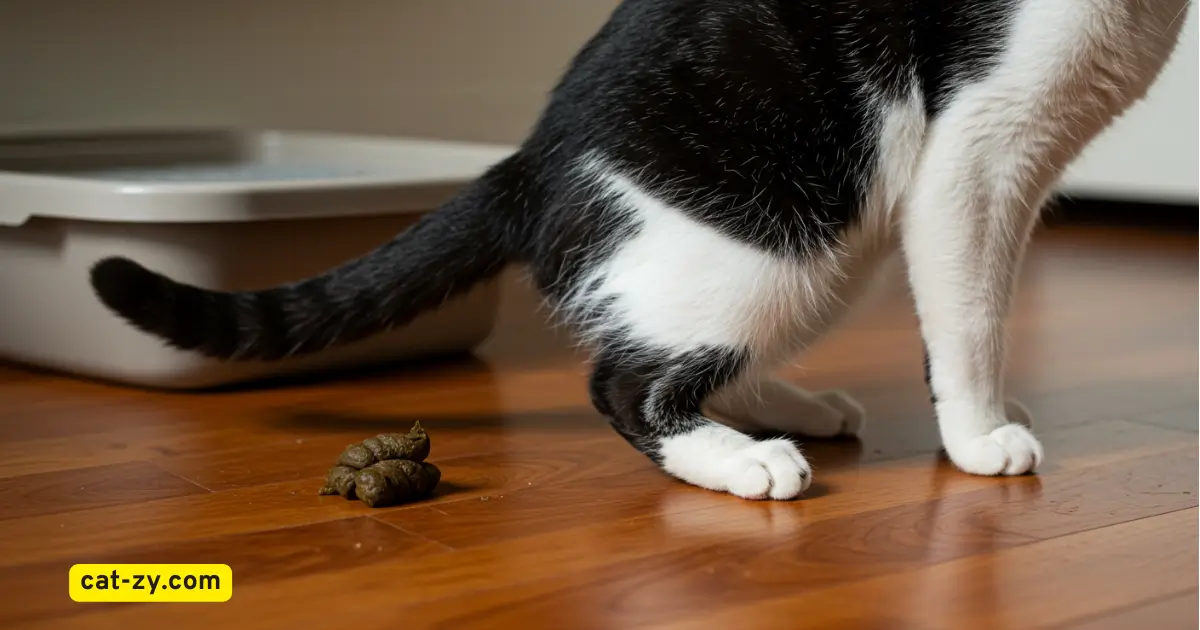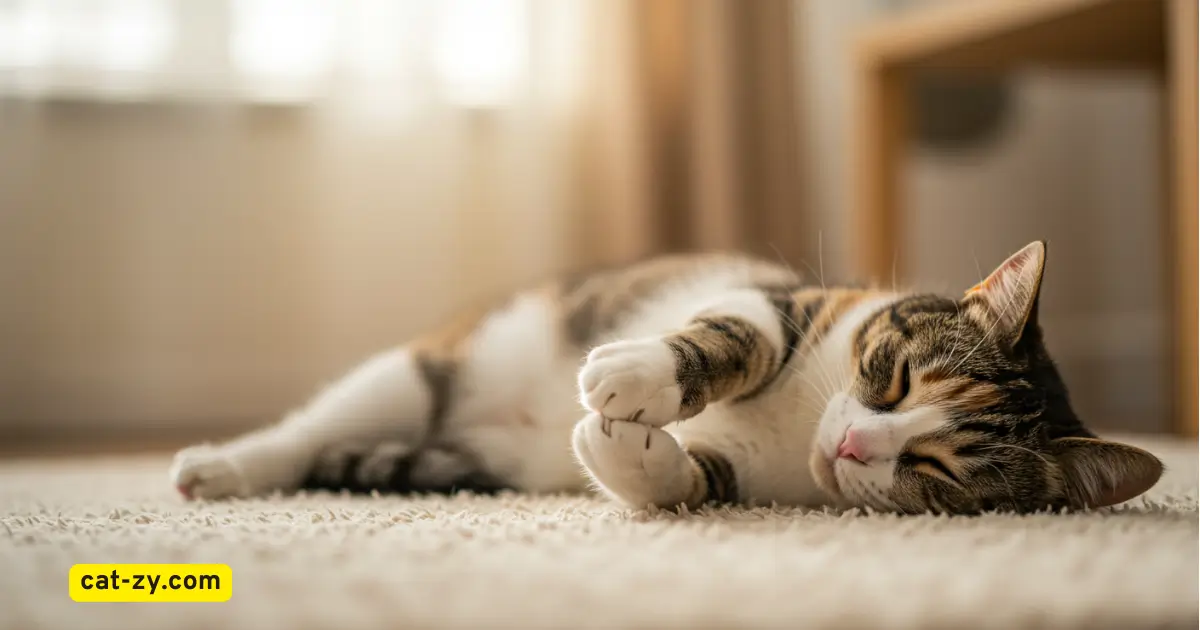Why Do Cats Groom Each Other? 5 Fascinating Reasons
Have you ever watched your cats grooming each other and wondered, ‘Why do cats groom each other?’ It’s more than just keeping clean. This act is an important part of their social bonding. When they groom each other, they’re not just removing hair—they are reinforcing their relationship and showing trust.
They’re sharing comfort, strengthening their bond, and communicating in ways we can’t see. This behavior shows us a lot about their social world. It’s where care and communication meet in every gentle lick.
Table of Contents
Understanding Feline Social Bonds
Cats grooming each other is more than just cleaning. It’s a way to show trust and connection. When they lick each other’s fur, they strengthen their bond. This is especially true in homes with more than one cat.
This behavior helps reduce stress and makes them feel safe. It’s a key part of their social life.
Benefits of Mutual Grooming
Grooming acts as a social glue for cats. They exchange scents, creating a shared identity. This helps them feel like they belong together.
It also lowers stress hormones, making them calmer. For indoor cats, it’s like being part of a wild cat colony. It gives them a sense of belonging.
How Grooming Enhances Communication
Cats use grooming to send silent messages. A gentle lick to a dominant cat might mean submission. Reciprocal grooming builds trust between equals.
The scent glands in their tongues leave pheromones. These mark each other as part of the same social unit. This non-verbal dialogue helps solve conflicts and shows their place in the household.
The Role of Hygiene and Self-Care in Grooming
Cats groom themselves to stay clean and healthy. They lick their fur to remove dirt, dead skin, and loose hairs every day. This habit also helps control parasites like fleas and keeps their coat smooth and waterproof.
Mutual grooming strengthens social ties. It also meets practical needs. Cats clean each other’s hard-to-reach spots, like the back or tail. This teamwork keeps all members of a group hygienic, reducing infection risks and skin irritation.
Self-grooming is a form of self-care. The rhythmic licking motion calms cats, lowering stress hormones. But, over-grooming may signal anxiety or discomfort. Watch for patches of missing fur or excessive licking, which could point to health issues.
Healthy grooming supports your cat’s well-being. Brushing your cat’s fur weekly helps remove tangles and mimic mutual grooming. It also lets you spot skin problems early, ensuring your pet stays comfortable and clean.
Exploring Why Do Cats Groom Each Other
Cats grooming each other is more than a simple habit. It’s a social behavior tied to their instincts as pack animals. When your cats lick one another, they’re strengthening bonds and showing mutual trust. This act creates a shared scent, signaling they belong to the same group.
Social Rituals and Trust Building
Mutual grooming, called allogrooming, starts early. Kittens learn it from their mothers, then use it later to build trust with other cats. When your cat licks a companion, it’s a sign of acceptance. The process releases calming hormones, easing stress and reinforcing their social ties. Owners might see this behavior between cats who share a close relationship.
Comparing Cats Grooming Each Other
Wild cats in colonies groom frequently to maintain group unity. Domestic cats do it too, but patterns vary. For instance, two cats in a household might groom each other more after a stressful event, like a new pet’s arrival. In contrast, feral groups use it to mark territory and reduce individual smells. Pay attention to where they groom—ears or back often signal respect, while targeted areas like the face show deep trust.
Decoding the Licking Behavior in Cats
Watching your cats groom each other might make you wonder why do my cats lick each other. This act is more than just keeping clean. It shows how they interact and build trust with each other.
Why Do My Cats Lick Each Other
Cats lick each other to strengthen their bond. This act, called allogrooming, helps them feel less stressed and united. By sharing scents, they create a common smell among their group.
This behavior also shows who’s in charge. Lower-ranking cats often get licked more by the dominant ones.
Understanding Why Do Cats Groom Each Other’s Bums.
The backside is a special area for cats. They can’t clean it themselves, so they lick it to stay hygienic. This also helps them mark their scent on each other.
Anal glands release pheromones, which cats use to mark their territory. By licking this area, they share these scents with their group. It’s not just about being clean. It’s also about showing they belong and checking each other’s health.
The Science of Scent, Stress Relief, and Bonding
Cat grooming is more than just keeping them clean. It’s a way for cats to share scents and calm each other down. When cats groom, they exchange tiny scent particles. This helps them feel like they belong together.
How Grooming Transmits Scents
Cats have special chemicals in their skin and glands. When they groom, these mix together. This creates a unique smell that shows they trust and belong to the same group.
Studies show that cats in homes with other pets use this scent to get along better. They recognize each other’s smells as safe.
Stress Reduction Through Grooming Rituals
Grooming each other helps cats relax by lowering stress hormones. The touch they share releases happy chemicals in their brains. This makes them feel calm and connected.
Researchers at the University of California, Davis, found that grooming pairs spend less time feeling anxious. It also makes their bond stronger, helping them feel safe together.
Common Insights on Do Cats Groom Each Other Regularly
Understanding how often cats groom each other can tell us about their social relationships. Do cats groom each other every day? The answer depends on the group size and how close they are. Grooming is a sign of trust.
Dominant cats usually start grooming, showing who’s in charge. In homes with many cats, you might see pairs grooming each other for 5–10 minutes a day. This helps them know their place in the group.
Observing Patterns in Social Grooming
Watch where cats groom each other. For example, they often groom each other’s tails and backs if they’re close. If grooming is rare, it might mean there’s tension. Kittens start grooming early to bond with others.
Adult cats groom to calm each other or welcome new members. These actions are more than keeping clean; they’re social meetings.
Impact on Feline Group Dynamics
Regular grooming helps cats get along better. In stable homes, cats that groom each other often have fewer fights. Dominant cats groom others to show their power, while lower-ranked cats groom to be accepted.
This cycle lowers stress hormones, making the group more peaceful. If you notice less grooming, it could mean there’s stress or fights over territory. Knowing these signs helps keep your cat community balanced.
Conclusion
Cat grooming is more than just keeping clean. It helps them bond and trust each other. This shows their need for hygiene, stress relief, and to feel part of a group.
Watching your cats groom each other shows they feel safe and connected. It helps them relax and keeps their social order. These habits are key to their health and happiness.
Knowing this, you should notice when they groom less. It could mean they’re stressed or upset. By supporting their grooming, you help them feel emotionally and physically well.
FAQ
Why do cats groom each other?
Cats groom each other to strengthen their social bonds. This behavior, called allogrooming, builds trust and safety within their group.
What advantages do cats gain from grooming one another?
Grooming offers many benefits. It helps cats relax, reduces tension, and improves their social structure. It makes them feel secure together.
Why do my cats lick each other?
Your cats lick each other to show affection and care. It’s not just about cleaning. It strengthens their bond.
Why Do Cats Groom Each Other’s Bums?
Licking each other’s rear ends is about hygiene and bonding. It helps them share scents and stay clean in their group.
Do cats groom each other more frequently in particular situations?
Yes, cats groom more after stressful times or when they’re relaxed at home. These sessions help them bond during and after these moments.
What does it mean when my cats groom each other and then suddenly stop?
If your cats stop grooming suddenly, they might be alert or noticed a change. It’s a common sign in cat social dynamics.
How can I encourage my cats to groom each other?
To encourage grooming, make sure your cats feel safe and comfortable. Provide cozy spots and reduce stress to help them groom more.
Can the frequency of grooming indicate health issues in cats?
Yes, a change in grooming habits can mean health issues. Watch for any big changes in their grooming to check their health.


